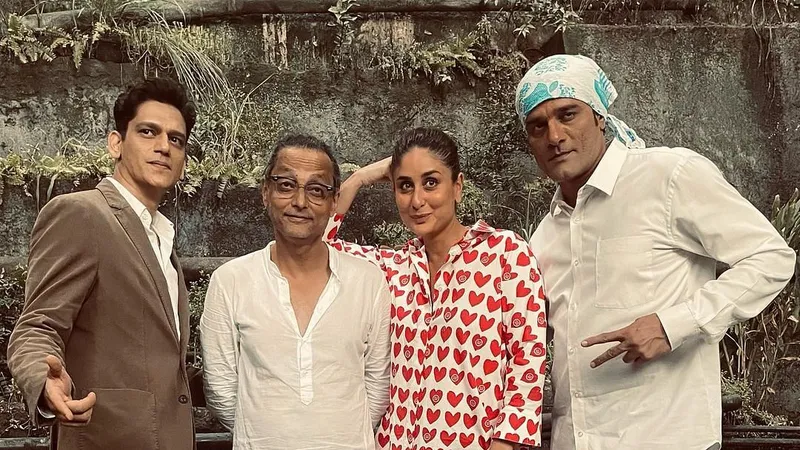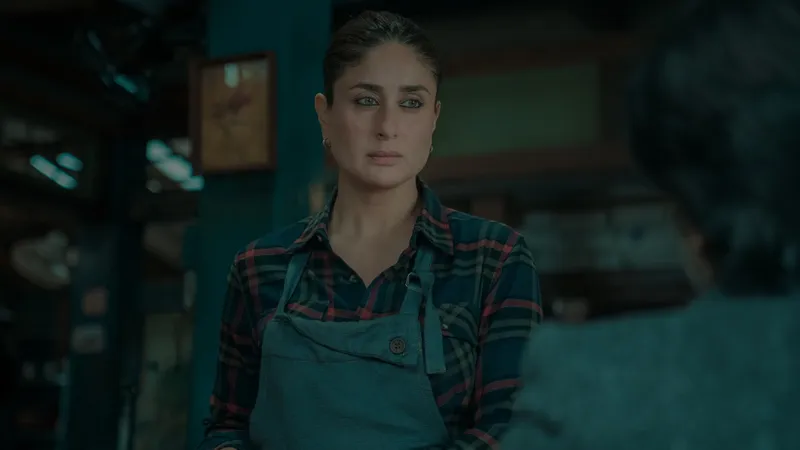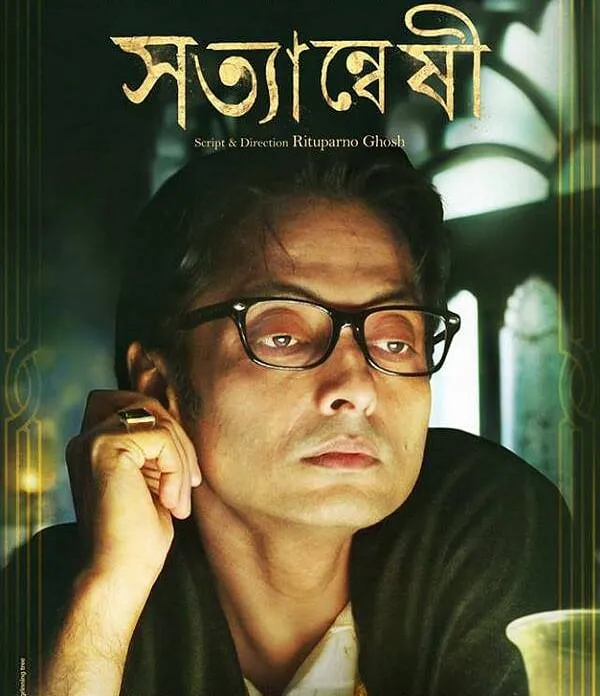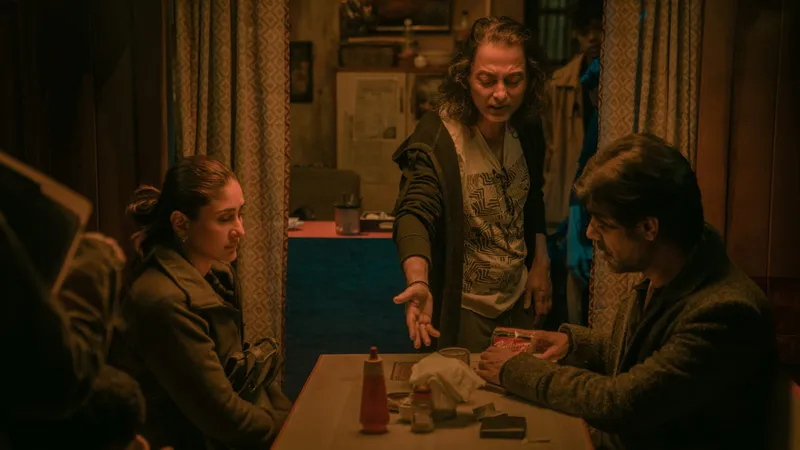Your characters won’t be real if your world isn’t real, says Jaane Jaan director Sujoy Ghosh
Riding high on the success of Jaane Jaan, filmmaker Sujoy Ghosh explains his signature storytelling method and strong female leads.
For filmmaker Sujoy Ghosh, life has come a full circle. Ghosh, who accidentally accelerated the multiplex movie trend with Jhankaar Beats (2003), recently saw success with his Netflix crime drama, Jaane Jaan.
Unlike his contemporaries, Ghosh has adapted to the video-on-demand (VOD) screen from the start–having co-produced mystery series Typewriter (2019) and the Sonam Kapoor starrer film, Blind (2023).
With Jaane Jaan, Ghosh has directed the adaptation of popular Japanese novel Devotion of Suspect X by Keigo Higashino, with an all-star cast of Kareena Kapoor Khan, Jaideep Ahlawat, and Vijay Varma. The film plays out in a typical Indian context with a foggy hill station as its geography.

Sujoy Ghosh along with Vijay Varma, Kareena Kapoor Khan and Jaideep Ahlawat during the shooting of Jaane Jaan
“As I was making this film for a Hindi speaking audience, I made characters that fit within our social norms. Their behaviour had to be something that this audience could relate with. Maya’s (Khan) character lives like a single mother would live in Kalimpong, and not the USA. In my stories, I draw from my life experiences and adapt them in my characters,” Ghosh tells YS Life.
Life-inspired characters
Focussed on building characters that audiences can identify with, Ghosh wrote this film around three people who navigate love and infatuation while dealing with a crime. He chose to make his three characters identifiable by the audience as people around them.
Jaane Jaan delves into nostalgia in a specific social environment. Ghosh says Khan signed up to play Maya D’Souza immediately after reading the script, making her OTT debut with it.
“Like I do with all my actors, I explained what I would need (from her) in conveying emotions and the message of her character. I was catching her at a point in life where she could contribute to the story with her life experience. She is a mother who works and balances bringing up her kids. Her interactions with the teenage daughter feels natural (in the film).”

Kareena Kapoor Khan as Maya in Jaane Jaan
Have to respect the audience’s intelligence, says filmmaker Hansal Mehta
Jaane Jaan features a memorable performance by Ahlawat, in the company of Varma. Both have displayed acting chops that movie actors aspire to build, and together, they deliver some of its best scenes.

Sujoy Ghosh as detective Byomkesh Bakshy in the Bengali film Satyanweshi (2013)
“Working with these guys is like working with theatre actors,” Ghosh says. “When they finish playing a scene, you wonder if you wrote it that well! Their performances are just so organic and spontaneous.”
Be it his acclaimed hit, Vidya Balan-starrer Kahaani (2012), or Badla (2019), a remake of the Spanish film The Invisible Guest with Taapsee Pannu, Ghosh has a knack of bringing out strong, solid performances from female actors.
Ghosh’s collaboration with Khan testifies to this. Recalling his experience of working with these female stars ‘a happy process’, he finds that women with nerves of steel are reflections of women around him.
“I have grown up with very strong women. I had two mothers–one that gave birth to me, and another who looked after me. Therefore, I have had the privilege of seeing them as they interact in their lives. Such women come naturally to me as characters when I write. With my wife, I saw the protectiveness that emerged after she became a mother,” he explains.
Locations as characters
Like Mira Nair, Jahnu Barua, or Satyajit Ray, geographical location becomes a character in Ghosh’s movies.
Kahaani featured neighbourhoods of Kolkata that bear witness to its shabby charm and historical legacy, while Badla captured the cloistered ivory tower life of a business professional in London, even as injustice plays out in a rural and forested place. Connecting a city, its culture, and dialect to its story makes it feel authentic.
Among current filmmakers, Ghosh and Shoojit Sircar are the only ones to set a story in a thriving, lived space.

Ghosh behind the scenes of Jaane Jaan
Bollywood and stereotypes: Bengali-Punjabi tropes minimise rich cultures
Ghosh says, “If the world is not real, the characters within this world cannot be real. This is what I have learnt from Ray. If you create Jurassic Park accurately, you will believe in the dinosaurs. Every time I have failed in creating the world, my films have failed.”
Jaane Jaan is set in Kalimpong, a hill station in West Bengal with a colonial legacy and cold climate. The place aids in enriching the intrigue in its protagonist, D’Souza, and her life.
“When you have a woman restarting her life away from prying eyes, you have to give her a quiet space which has an element of mystery. For instance, in Kahaani, Kolkata had to be shown through Vidya Bagchi’s eyes, and not as I see the city. She can see things about the city that I, or anyone living there, might miss,” he further explains.
Besides directing films, Ghosh also co-writes films and series with others. He has co-written his daughter Diya Annapurna Ghosh’s first film Bob Biswas (2021) and has also acted as the fictitious Detective Byomkesh Bakshy in the Bengali film Satyanweshi (2013).
His short films, Ahalya (2015) and Anukul (2017), had become popular over time. Now, he wants to make something for the big screen while he helps trusted assistant directors and Diya direct their stories.
“I would like to give back to the industry all that it has given to me,” he concludes, with artistic flourish.
Edited by Megha Reddy







